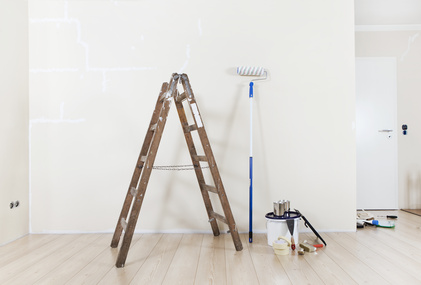A Guide to Calculating Compensation for Tenant Damage
Published on April 1, 2015 by Sarah Mac

The subject of fair wear and tear is a complex one and something we’ve written about and will continue to write about with the aim of covering as many aspects as possible.
One aspect that we’re looking at in this post is how to go about calculating compensation charges against a tenant who has caused damage to a property outside of what can be deemed fair wear and tear.
Even if you don’t have to calculate compensation for tenant damage or negligence yourself, it’s a good idea to know how it works as it can help ward off disputes if you can demonstrate how you worked out any proposed deductions from the deposit. Disputes can be costly, so you should try and do whatever you can to avoid them. Making fair and reasonable calculations and showing how you arrived at them will usually do the trick.
A Word on ‘Betterment’
One very important factor to consider in all of this is the fact that ‘betterment’ is not allowable. As a landlord, you cannot demand new for old, neither are tenants responsible for replacing items that have reached the end of their usable lives.
Making Your Calculations
The calculation process should start with a list. This list should include:
- The length and type of the tenancy
- The age, quality and condition of the damaged item at the time of check-in
- The original cost of the damaged item
- The average life expectancy of the item
- Any special circumstances, e.g. the location of the item
We can use an example to show you how to make a calculation for compensation. Let’s say a tenant continued to allow a sofa to rub against a painted wall. This would usually be classed as tenant negligence as it would be reasonable to expect the tenant to take steps to move the sofa to prevent the damage to the wall.
The tenancy was for two years, for a professional non-smoking couple. The wall had been painted by a reputable tradesperson using good quality emulsion and the cost to paint the single wall worked out to £50. It is important to note here that you cannot make a charge for repainting an entire room, only the walls that are damaged, so you can only factor in the cost of painting the single wall.
The average life expectancy of a painted wall under a dual occupancy, non-smoking tenancy is a maximum of 5 years (although this will depend on extenuating circumstances, see below). The £50 original cost should be divided by the life expectancy, 5 years, giving an annual depreciation figure of £10 per year. It is now 2 years since the wall was painted, so it would therefore have another 3 years left before you would expect to have to repaint. This therefore works out that the amount you can claim in compensation from the tenant is 3 x £10 = £30.
Extenuating circumstances could include the location of the damaged wall. Life expectancy will be lower in high traffic areas such as hallways and kitchens than it will in lighter use areas such as bedrooms. It will also be lower if the original paint and / or finish were of poorer quality.
Average Life Expectancy – The Most Important Element
Every aspect of a property has a shelf life and this is the most important element of any compensation calculation. The lettings industry has a set of accepted principles on this and the Association of Independent Inventory Clerks (AIIC) has developed a useful guide to life expectancies for many everyday items, based on manufacturers’ recommended life spans. It’s a reference point that we as professional AIIC accredited inventory clerks use to help guide our landlord clients when working out what can be deemed as reasonable compensation demands.
Calculations Must be Fair, Reasonable & Lawful
When calculating compensation, you cannot just come up with any figure off the top of your head. Tenancy Deposit Schemes and courts of law will be quick to intervene. Until you can provide evidence that any proposed deductions are justified and lawful, the tenant continues to own the deposit.
It is clear to see the importance of having access to robust evidence of the condition of a property and its contents at check-in. Fine detail is essential, as is a good knowledge of the meaning of fair wear and tear and the line between that and tenant damage or negligence.
Professional Inventories are a Sound Investment
Your rental property is an investment, most likely an expensive one. It is therefore well worth investing in a professionally compiled inventory which will act as a legal document that is sound enough to be used as proof of the condition of a property’s fixtures, fittings and contents at any given time.
If you would like to find out more about our value-added digital inventory reporting service, and view a sample report so you can see for yourself the detail we work do, please get in touch.



